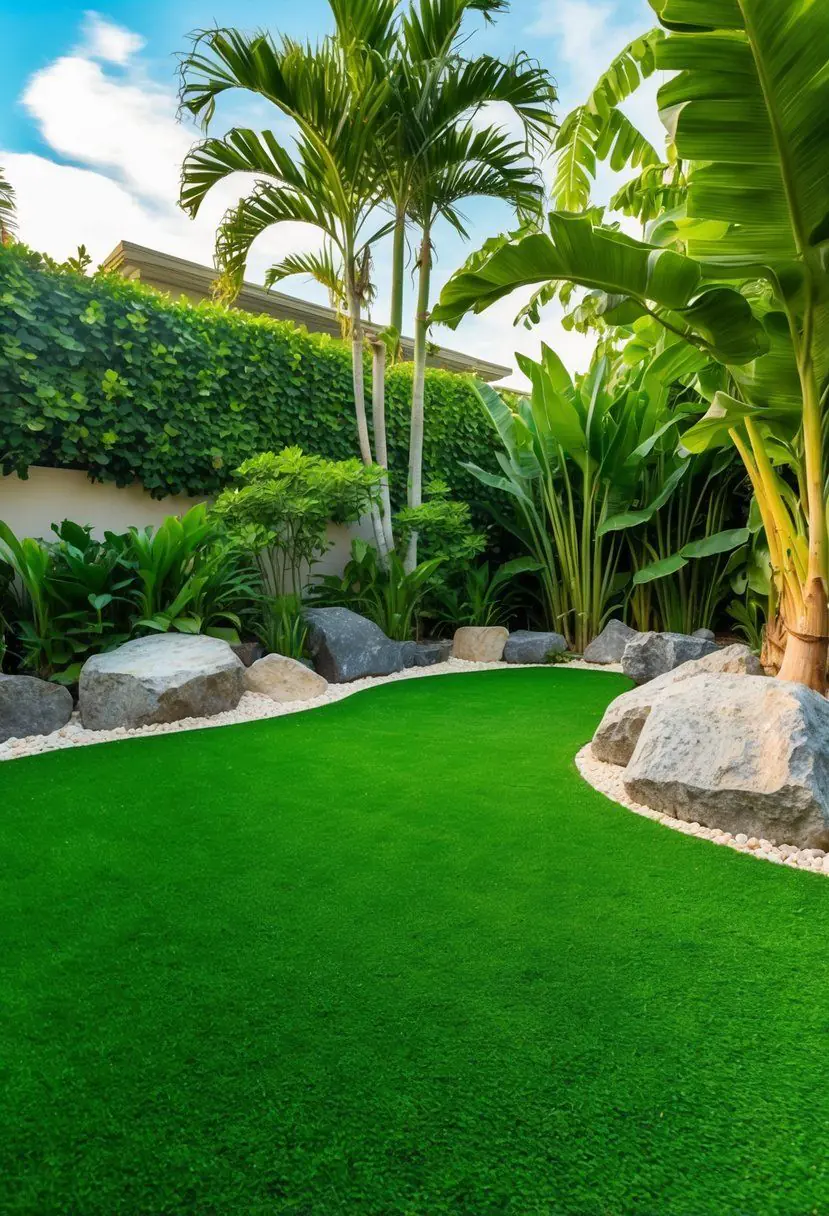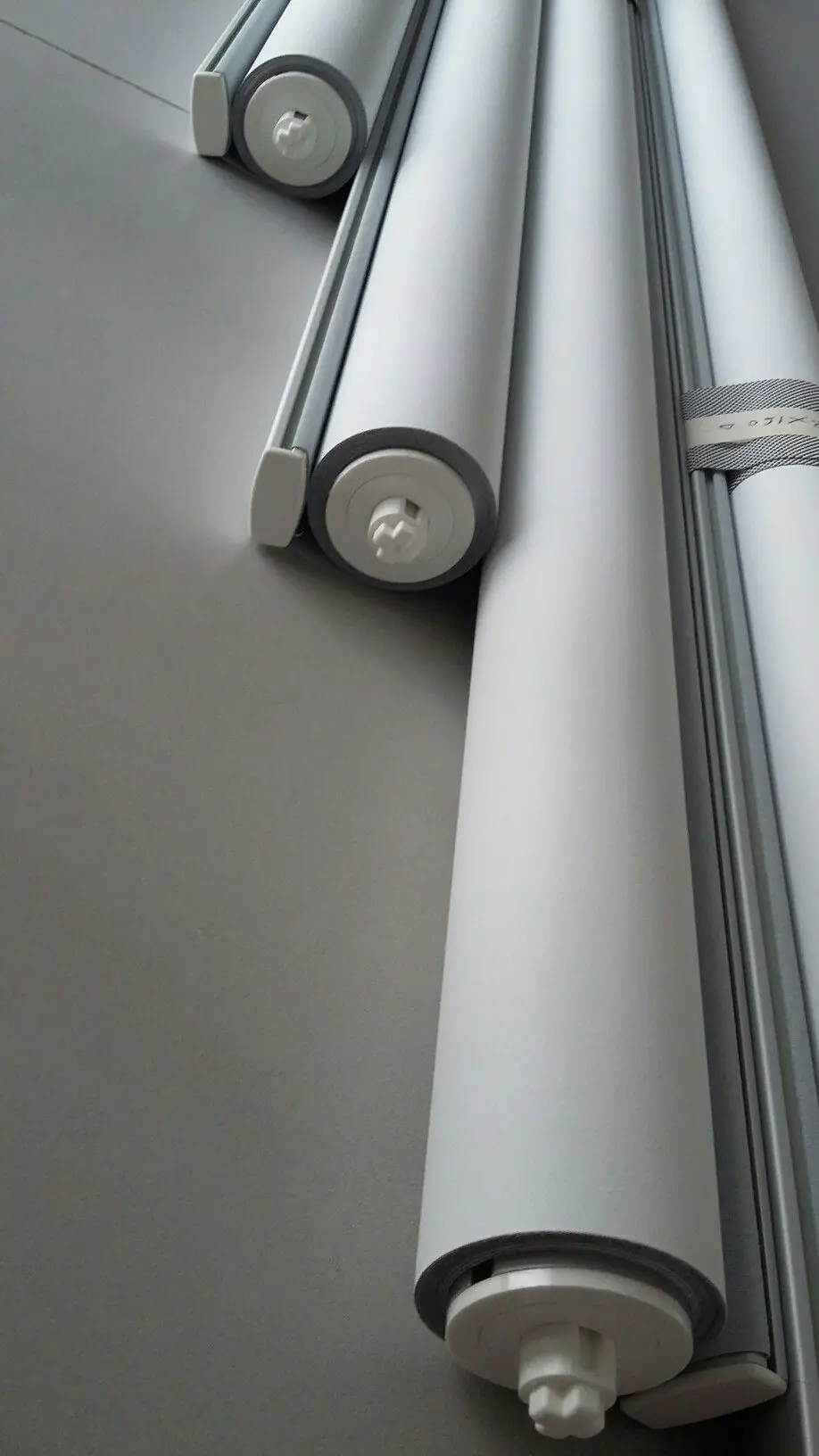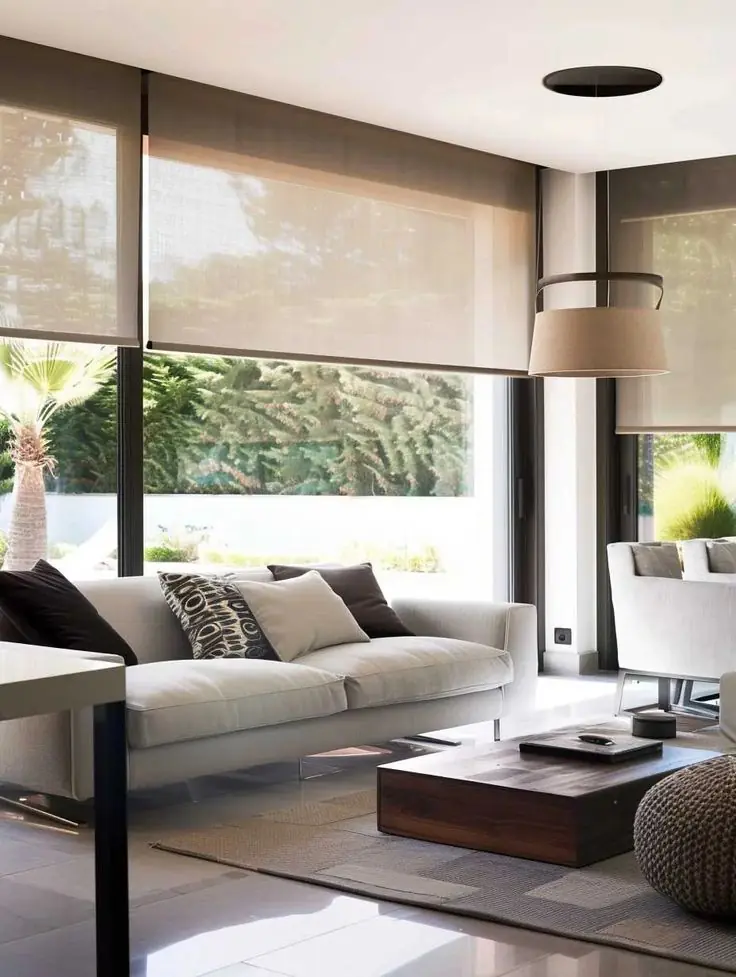On a bright Friday morning in Dubai, Leena held two swatches against a small bedroom window, one a cool stone linen, the other a soft cotton blend in pale sand. The city light slid across both, changing their mood with each passing cloud. She wanted a clean fold, a fabric that would hold its shape in the afternoon heat, and an easy way to keep the room dark for weekend naps. She opened her notes and wrote one sentence, Best Fabric for Roman Blinds must be beautiful at 10:00, practical at 14:00, and calm at 20:00. This story is about finding that fabric in real UAE homes, with measurements in centimeters, budgets in AED, and a voice that keeps decisions simple.
- Is There Only One Best Fabric for Roman Blinds?
- Choosing the Best Roman Blind Fabric
- Pure Linen Roman Blinds Fabric Guide
- Linen Blends for Durable Fabrics for Roman Shades
- Cotton Roman Blinds Fabric Options
- Cotton Blends, Affordable Roman Blind Materials
- Voile Fabric for Roman Blinds
- Wool Fabric for Roman Blinds
- Chenille Roman Blind Fabric
- Silk Roman Blinds Fabric
- Faux Silk Roman Shades
- Velvet Fabric for Roman Blinds
- Woven Woods for Natural Roman Blinds
- Polyester Fabric for Roman Blinds
- Mid Article Quick Compare, Fabric Options for Window Blinds
- Workroom details that make Romans behave
- Light, heat, and where linings matter most
- Pairings that make Romans feel complete
- Care and cleaning across fabric families
- Room stories from UAE homes
- Budgeting in AED, keeping choices honest
Is There Only One Best Fabric for Roman Blinds?
No single cloth wins every room. Roman blinds earn their elegance from crisp folds, even stacks, and color that reads steady across day and night. Those results come from how a fabric behaves, not just how it looks. Heat, humidity, room function, and the size of the window all matter. A breezy kitchen near open windows asks for washable blends. A dark bedroom near a streetlamp needs a lined or blackout solution. A living room with strong afternoon sun benefits from thermal or triple weave backings. This guide gives you a working map, a Roman Blinds Fabric Guide that matches fabric families to real situations, so your choice feels sure on day one and easy to live with for years.
Choosing the Best Roman Blind Fabric

Start with three questions. What mood do I want, breezy, grounded, dramatic. How much light control do I need, soft filter, dim out, blackout. How much care time do I have, quick vacuum and occasional steam, hand wash, dry clean. When you answer those, the field narrows fast. Linen sits on the breezy side, velvet leans dramatic, cotton and polyester blends cover the everyday middle. If you keep these axes in mind, you will see why different rooms often deserve different fabrics even within the same home.
Pure Linen Roman Blinds Fabric Guide
Linen looks like a coastal morning. It brings texture, a relaxed hand, and a gentle slub that photographs beautifully. As a Roman, linen folds softly rather than sharply, which suits living rooms and bedrooms where you want ease, not strict lines. On the practical side, pure linen can relax more in humidity and strong sun, so it appreciates a good lining and gentle care. For windows that you raise and lower daily, a mid weight linen with blackout lining strikes a better balance than very light gauze. Expect face fabric near AED 70 to AED 150 per meter in many UAE shops, with lining extra.
Linen vs Cotton Roman Blinds
Linen brings character, cotton brings order. Cotton tends to fold into straighter stacks, linen into softer waves. Cotton usually shrinks less, linen breathes more. If you love linen’s texture but want cleaner lines, choose a linen blend or reinforce with interlining. If you want a sharper silhouette that still feels natural, cotton or a cotton rich blend is a dependable path.
Linen Blends for Durable Fabrics for Roman Shades

Blends solve everyday frictions. Linen polyester mixes keep the slub and depth, then add resilience so folds stack neatly. These are excellent Durable Fabrics for Roman Shades in busy rooms, especially where fingers open and close blinds many times a day. A 60,40 linen polyester or 55,45 linen cotton behaves kindly in heat, can be spot cleaned more easily than pure linen, and costs less. It is a quiet win in rentals where you want texture without a high maintenance plan.
Cotton Roman Blinds Fabric Options
Cotton is the steady friend. It dyes well, reads clean, and folds into honest lines. In bedrooms and studies, cotton remains one of the best Fabric Options for Window Blinds because it balances cost, care, and look. Add a dim out or blackout lining, and you will appreciate how it keeps shape against the backing. For kitchens and kids’ rooms, cotton’s easy spot cleaning helps, though you still want a lining to manage light and heat.
Cotton Blends, Affordable Roman Blind Materials
Blends stretch budgets without feeling cheap. Cotton polyester or cotton viscose mixes handle daily movement, resist wrinkles, and come in dozens of quiet colors suited to UAE interiors. As Affordable Roman Blind Materials, these blends allow you to finish several rooms at once, each with blackout lining where needed, without a heavy bill. They also sit well with wave curtains if you pair a blind inside the reveal and a curtain outside, a combination many living rooms rely on for both softness and darkness.
Voile Fabric for Roman Blinds
Voile is the whisper layer. As a Roman, it filters harsh daylight, softens reflections on screens, and makes a small window feel gentle. Voile Romans work best in spaces where privacy in daylight matters but full darkness does not, breakfast nooks, home offices, and halls. You can pair a voile Roman inside the reveal with a heavier outside mount curtain for night, an approach that keeps the window neat by day and quiet by night.
Wool Fabric for Roman Blinds
Wool feels like evening, warm, quiet, composed. In a Roman, wool gives confident folds and a subtle sheen that looks luxurious without shouting. It also muffles echo in tiled rooms, a small but welcome effect in open plan spaces. Wool prefers lining and gentle care, and it tends to be higher in cost, yet for a formal lounge or study it brings a calm gravity that few fabrics match.
Chenille Roman Blind Fabric
Chenille catches light softly, which makes folds look plush. It suits bedrooms and lounges where you want a textural field without pattern. The pile can trap dust more than flat weaves, so plan a light vacuum routine. Choose a stable backing and a workroom that knows how to keep pile fabrics from crushing at the headrail. The result is a Roman that looks like a small upholstered panel each time it lowers.
Silk Roman Blinds Fabric
Silk reads festive in evening light. It drapes with grace and holds color like nothing else. In strong sun it needs protection, interlining or blackout backing, and it prefers rooms without harsh humidity. Many UAE homes use silk Romans in dining rooms or guest rooms that do not face west. The care is gentler, the look is special. If you love the sheen but want easier maintenance, faux silk is next.
Faux Silk Roman Shades
Faux silk brings the shimmer without the worry. Polyester based faux silks resist sun better, cost less, and clean more easily. They still like a lining for structure and to avoid light pinholes at needle holes. For a modern home that wants a hint of gloss above a console or in a compact bedroom, faux silk Roman shades are a sensible middle path.
Velvet Fabric for Roman Blinds
Velvet turns a window into a statement. As a Roman, velvet folds into rich stacks and darkens a room quickly. Pick cotton or performance velvets for better sun resistance. Use blackout lining behind. Vacuum with a soft brush every couple of weeks so dust does not flatten the pile. In media corners, velvet Romans reduce reflections and add a theatre note without making the room heavy.
Woven Woods for Natural Roman Blinds
Woven woods, bamboo, matchstick, grasscloth, bring texture and a beach or desert nod into a room. They filter light beautifully and pair well with stone floors and brown furniture. For bedrooms, add a separate blackout liner, either attached at the back or as an independent shade. Expect some natural variation in slats, which is part of the charm. If you want the look without light leaks, choose tighter weaves and dark backings.
Polyester Fabric for Roman Blinds
Polyester is the workhorse. It resists fading better than many naturals, wipes easier, and delivers clean folds on a budget. Modern polyester weaves can mimic linen or cotton very closely, which helps when you want consistency across rooms. For rental apartments and high traffic spaces, polyester Romans with triple weave lining are hard to beat. They wear the day in and day out chores with quiet stamina.
Mid Article Quick Compare, Fabric Options for Window Blinds
Here is a simple table you can screenshot, it maps common choices to everyday needs. Prices vary by brand and supplier across the UAE, the AED ranges are indicative.
| Fabric | Look and Mood | Care and Durability | Light Control | Typical AED Range* | Best Use |
|---|---|---|---|---|---|
| Pure Linen | Breezy, textured | Needs gentle care, line with dim out or blackout | With lining, good, without, light filter | 70–150 per meter face, lining extra | Living rooms, calm bedrooms |
| Linen Blend | Natural look, neater fold | More resilient than pure linen | With lining, strong | 45–110 per meter face | Busy rooms, rentals |
| Cotton | Clean, classic | Easy to maintain, may shrink slightly | Excellent with blackout lining | 40–100 per meter face | Bedrooms, studies |
| Cotton Blend | Orderly, soft | Wrinkle resistant, budget friendly | Excellent with lining | 30–90 per meter face | Kids’ rooms, kitchens |
| Voile | Airy, diffused | Washable, light vacuum | Filter only | 20–80 per meter face | Offices, hallways, pair with curtain |
| Wool | Warm, refined | Higher care, durable with lining | Strong with dim out | 120–220 per meter face | Formal lounges |
| Chenille | Plush, light catching | Vacuum often, protect pile | Strong with lining | 60–140 per meter face | Bedrooms, lounges |
| Silk | Elegant, lustrous | Gentle care, keep from harsh sun | Needs interlining or blackout | 150–300 per meter face | Guest rooms, dining |
| Faux Silk | Silk look, easier life | Low care, sun resistant | Great with lining | 45–120 per meter face | Modern bedrooms |
| Velvet | Rich, dramatic | Vacuum lightly, protect from dust | Excellent with blackout | 70–160 per meter face | Media corners, moody lounges |
| Woven Woods | Natural, textural | Dust, then spot clean | Filter, needs separate blackout | Per shade, area priced | Kitchens, sunny lounges |
| Polyester | Neat, versatile | Very durable, easy clean | Strong with triple weave | 25–90 per meter face | Rentals, high traffic rooms |
*Fabric only, not including workroom, hardware, or installation. Always request a quote that lists face, lining, mechanism, and labor separately so comparisons stay fair.
Workroom details that make Romans behave
Roman blinds are small machines. A strong headrail, straight tapes, even ring spacing, and a square bottom bar decide how the fabric falls and how it ages. Lining adds body, interlining adds a gentle pad that hides small fabric slubs and improves darkness. For wide windows, split one long Roman into two matched ones with a slim gap, this keeps weight manageable and stacks tidy. For kitchens, consider a cordless or side chain mechanism that stays clean and safe.
Light, heat, and where linings matter most
In the UAE, light behaves like a guest who stays all afternoon. If you want calm evenings, plan for it early. Blackout linings do more than darken, they protect face fabric from bleaching, they add mass so folds hang straight, and they keep heat from building behind the blind. Dim out triple weave is often enough for living rooms where you still want a little glow at sunset. In bedrooms, full blackout saves sleep and looks tidier from the street because no inner light shines through seams.
Pairings that make Romans feel complete
Romans inside and curtains outside create a layered scene that fits many apartments. The Roman handles precision, the curtain adds height and softness. Choose cousins, a stone Roman with a pearl wave sheer, a teal Roman with oyster dim out curtains, a cotton Roman with a linen look curtain. Repeat a tone from the Roman in a cushion or throw so the window does not feel isolated from the room.
Care and cleaning across fabric families
Rome was not built in a day and Romans do not stay clean without a habit. Vacuum blinds with a soft brush every one to two weeks. Steam lightly from 10 to 15 cm to relax minor creases, avoid soaking glue lines. Spot clean with a mild detergent and a white cloth, feather the edges so you do not leave rings. For silk, velvet, wool, and chenille, follow dry clean advice from the workroom. Sheers and many polyester or cotton blends can be gently cleaned at home, but always test low corners first.
Room stories from UAE homes
Business Bay study, screen glare and a shallow reveal
A cotton polyester Roman in pale mushroom went outside mount with 12 cm overlap each side. The fabric held a clean line on camera, glare dropped, and late calls felt calmer. The client appreciated how quickly the blind lifted above the reveal each morning, which made the small window read taller.
Dubai Hills bedroom, early sun and brown furniture
Linen blend Roman in sage with full blackout lining, outside mount. Morning sun softened without harsh edges, the brown bed frame looked richer, and weekend sleep lingered. A small pearl sheer curtain, ceiling to floor, completed the scene for daylight privacy.
Sharjah kitchen, humidity and daily cooking
Polyester Roman with a wipeable backing, inside mount to keep the sill clear. Daily steam did not ruffle it, and splashes cleaned with a quick pass. The fabric mimicked linen enough to keep the mood warm without adding care time.
Budgeting in AED, keeping choices honest
Hardware and labor shape totals more than most expect. Mechanisms with metal headrails cost more than basic battens, yet they run smoother for years. Blackout backing is a small add on that pays back in comfort. For a mid sized Roman, plan from AED 450 to AED 1,200 per shade depending on fabric, lining, width, and mechanism, with premium fabrics higher. If you are covering several rooms, ask suppliers to price a set so you can see savings clearly. Always measure twice, confirm mount type, and request the fabric name and code on the invoice so future replacements match.
Frequently Asked Questions (FAQs)
Explore the finest interiors in the UAE market. Step inside stunning spaces. browse now!





